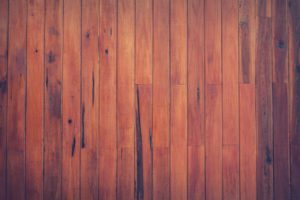Wooden surfaces exude timeless beauty and warmth, but they can show signs of wear and tear over time. Thankfully, DIY enthusiasts have an ally in their quest to revitalize wood – timber cleaner and filler. In this comprehensive guide, we’ll explore the world of timber maintenance, highlighting the transformative power of these two essential products.
The Significance of Timber Cleaner
Timber cleaner is the first line of defence for rejuvenating wooden surfaces. Here’s why it’s a must-have for DIY enthusiasts:
- Dirt and Grime Removal: Timber surfaces, whether indoors or outdoors, accumulate dirt, grime, and stains over time. Timber cleaner effectively removes these unsightly blemishes, revealing the natural beauty of the wood underneath.
- Mold and Mildew Prevention: Wooden surfaces are susceptible to mould and mildew growth, especially in humid environments. Timber cleaner removes existing mould and contains agents that help prevent future infestations.
- Prepare wood for Treatment: Whether you plan to stain, paint, or apply a protective finish to the wood, timber cleaner is the crucial first step. It ensures the wood is clean and ready to absorb your chosen treatment, producing a more even and professional-looking finish.
- Maintains Wood Health: Regularly cleaning your timber surfaces with a suitable timber cleaner prolongs the life of the wood. It helps prevent rot, decay, and other damage caused by dirt and contaminants.
Choosing the Right Timber Cleaner
Selecting the appropriate timber cleaner is paramount to achieving the best results for your woodwork projects. Consider the following factors when choosing a timber cleaner:
- Wood Type: Different wood types may require different cleaning solutions. Some cleaners are specifically formulated for hardwoods, while others work well on softwoods or composite wood.
- Indoor vs. Outdoor Use: Determine where to use the cleaner. Some products are designed for indoor use and may offer a different level of protection than those formulated for outdoor applications.
- Environmental Impact: If you’re environmentally conscious, look for eco-friendly timber cleaners. These products are often biodegradable and safer for plants and animals.
- Effectiveness: Read product reviews and consult with experts or professionals to ensure that the cleaner you choose effectively removes the specific stains or contaminants you’re dealing with.
The Versatility of Timber Filler
While timber cleaner prepares the wood’s surface, timber filler addresses imperfections and damage. Here’s why timber filler is a crucial companion to timber cleaner:
- Holes and Gaps: Over time, timber can develop holes, gaps, or cracks due to wear and tear, weathering, or insects. Timber filler is designed to fill these voids, restoring the wood’s structural integrity and appearance.
- Seamless Repair: When used correctly, timber filler can create a seamless repair that blends seamlessly with the surrounding wood. This makes it an invaluable tool for maintaining the aesthetics of your wooden surfaces.
- Enhanced Durability: Timber filler not only restores the appearance of wood but also strengthens it. It helps prevent further damage by sealing vulnerable areas against moisture, insects, and other potential threats.
- Prepares for Finishing: Like timber cleaner, timber filler ensures the wood is in optimal condition for finishing touches. Whether you plan to paint, stain, or varnish, timber filler creates a smooth and even surface.
 Choosing the Right Timber Filler
Choosing the Right Timber Filler
To make the most of timber filler, choosing the right product for your project is crucial. Consider the following factors when selecting a timber filler:
- Type of Damage: Assess the damage you need to repair. Different fillers are designed for specific purposes, such as filling minor cracks, significant gaps, or wood rot.
- Drying Time: Timber fillers come in various formulations, each with its own drying time. Depending on your project timeline, choose a filler that suits your needs.
- Stainable or Paintable: Some fillers are designed to be stainable, while others are meant for painting. Ensure that the filler you choose is compatible with your desired finish.
- Ease of Application: Read product instructions and reviews to determine how easy the filler is to apply and whether it requires any special tools or expertise.
A Step-By-Step Guide to Timber Cleaning and Filling
Now that we’ve explored the significance of timber cleaner and timber filler, let’s outline a step-by-step guide for a typical wood restoration project:
Step 1: Assessment
Begin by assessing the condition of your wooden surface. Identify areas that require cleaning and those with imperfections that need filling. This assessment will help you determine the right products to use.
Step 2: Cleaning
Start by thoroughly cleaning the wood using your chosen timber cleaner. Follow the product’s instructions and remove all dirt, grime, and stains.
Step 3: Filling
Apply timber filler to any holes, gaps, or cracks in the wood. Use a putty knife or a similar tool to smooth the filler and create a seamless repair. Follow the filler manufacturer’s guidelines for drying times.
Step 4: Sanding
Once the filler is dry, sand the repaired areas to ensure a smooth and even surface. Use progressively finer sandpaper until the wood is ready for finishing.
Step 5: Finishing
Apply your chosen finish, whether paint, stain, or varnish. Follow the finish manufacturer’s instructions for the best results.
Step 6: Maintenance
Regularly clean and maintain your wood surfaces to prevent future damage and extend their lifespan. This includes periodic cleaning with timber cleaner and addressing new imperfections with timber filler.
Timber cleaner and timber filler are essential tools for DIY enthusiasts looking to revive and restore wooden surfaces. Understanding their significance and choosing the right products for your projects allows you to breathe new life into your woodwork. Whether you’re repairing furniture, decking, or other wooden structures, the combination of timber cleaner and filler can help you achieve professional-looking results that showcase the timeless beauty of wood. So, roll up your sleeves, grab your tools, and embark on your next woodwork wonder.



